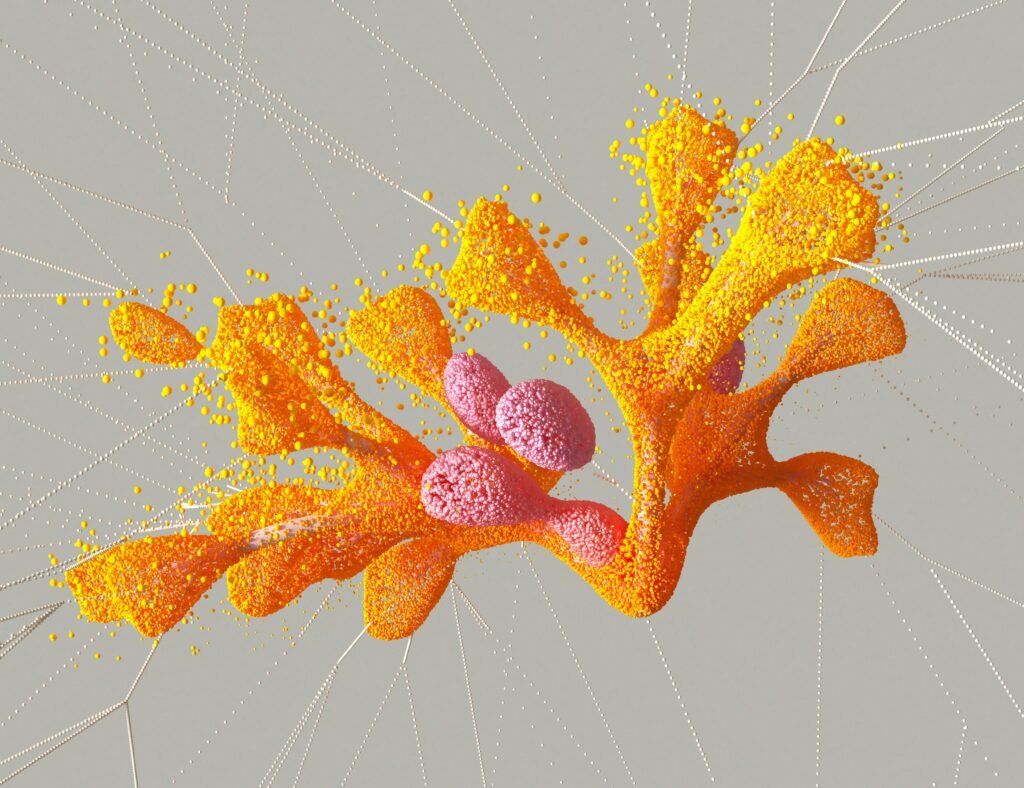Table of Contents
Deep learning is a branch of machine learning that has become extremely popular in recent years. It is an artificial intelligence technique that allows computers to learn from data and carry out tasks that usually require human intelligence. Deep learning models are created to learn and enhance themselves over time, making them well-suited for complex tasks like speech recognition, image classification, and natural language processing. In this article, you will gain an understanding of the basics of deep learning, its applications, and the challenges it encounters.

Deep learning is fundamentally based on neural networks, which are mathematical models that aim to imitate the structure and function of the human brain. These networks consist of layers of interconnected nodes that process information and make predictions based on the data they receive. Deep learning models can learn from large amounts of data, which makes them very effective at tasks such as image and speech recognition. They are also highly adaptable and can improve over time as they are exposed to more data.
Despite its numerous benefits, deep learning encounters various challenges. These include the requirement for large datasets and high computational power, the interpretability and explainability of models, as well as the issues of overfitting and generalization. However, as deep learning continues to advance, researchers are actively working to address these challenges and unleash its full potential. In the upcoming sections, we will delve into the basics of deep learning, its applications, and the challenges it confronts.
Key Takeaways
- Deep learning is a subset of machine learning that utilizes neural networks to understand from data and carry out intricate tasks.
- Deep learning has numerous applications in computer vision, natural language processing, and healthcare.
- Despite its many benefits, deep learning faces challenges such as the need for large datasets, interpretability and explainability of models, and the issue of overfitting and generalization.
Fundamentals of Deep Learning
Neural Networks and Their Building Blocks
A neural network is a collection of interconnected neurons that are organized in layers. Each neuron receives input from other neurons, processes it, and then sends output to other neurons. The basic building blocks of a neural network are neurons, weights, and activation functions.
A neuron is a computational unit that receives input from other neurons and computes an output. Each neuron has a set of weights that determine the strength of its connections to other neurons. The weights are adjusted during training to optimize the network’s performance.
An activation function is a non-linear function that is applied to the output of a neuron. It introduces non-linearity into the network, allowing it to model complex relationships between inputs and outputs. Two common activation functions are ReLU and sigmoid. ReLU is preferred in most cases because it is computationally efficient and reduces the risk of the vanishing gradient problem.
Key Differences Between Deep Learning and Machine Learning
Deep Learning and Machine Learning are both subsets of Artificial Intelligence (AI), but they differ in their approach. Machine Learning uses algorithms to learn from data and make predictions, while Deep Learning uses neural networks to model and solve complex problems. Deep Learning is more powerful than Machine Learning because it can learn from large amounts of unstructured data, such as images, videos, and text.
Core Frameworks and Tools
There are many frameworks and tools available for Deep Learning, but some of the most popular ones are TensorFlow, Keras, PyTorch, and Caffe. These frameworks provide a high-level interface for building and training neural networks, and they support a wide range of architectures and algorithms.
Two popular optimization algorithms used in Deep Learning are Adam and RMSprop. Adam is an adaptive learning rate algorithm that is well-suited for large datasets and noisy gradients. RMSprop is a gradient descent algorithm that uses a moving average of squared gradients to normalize the learning rate.
In conclusion, Deep Learning is a powerful subset of Machine Learning that uses neural networks to model and solve complex problems. It is based on the principles of neurons, weights, and activation functions, and it differs from Machine Learning in its approach. Deep Learning is supported by a wide range of frameworks and tools, and it uses optimization algorithms such as Adam and RMSprop to improve performance.
Deep Learning Architectures
Convolutional Neural Networks (CNN)
Convolutional Neural Networks (CNNs) are a type of neural network that is particularly well-suited for image and video recognition tasks. CNNs consist of multiple layers, including a series of convolutional layers that extract features from the input data and a series of fully connected layers that classify the input.
One of the most popular CNN architectures is the Residual Network (ResNet), which uses skip connections to allow for deeper networks without suffering from the vanishing gradient problem. ResNet has achieved state-of-the-art performance on a number of image recognition tasks.
Recurrent Neural Networks (RNN)
Recurrent Neural Networks (RNNs) are a type of neural network that is particularly well-suited for sequential data, such as time series or natural language. RNNs consist of a series of hidden units that are connected to each other in a recurrent manner, allowing the network to maintain a memory of past inputs.
Long Short-Term Memory (LSTM) is a popular type of RNN that is designed to address the vanishing gradient problem that can occur in traditional RNNs. LSTMs use gated cells that allow the network to selectively remember or forget information from previous time steps.
Generative Adversarial Networks (GAN)
Generative Adversarial Networks (GANs) are a type of neural network that is used for generating new data that is similar to a given dataset. GANs consist of two networks: a generator network that generates new data, and a discriminator network that attempts to distinguish between the generated data and real data.
GANs have been used for a wide range of tasks, including generating realistic images, music, and even text. However, GANs can be difficult to train, and there is a risk of overfitting to the training data.
Overall, Deep Learning architectures such as CNNs, RNNs, and GANs have shown great promise in a wide range of applications. However, they also come with their own set of challenges and limitations, such as the need for large datasets and high computational power, as well as issues with interpretability and overfitting.
Deep Learning in Practice
Deep learning has become increasingly popular in various fields due to its ability to learn from large amounts of data and make predictions or decisions based on that learning. In this section, we will explore some of the practical applications of deep learning, including computer vision, natural language processing, speech recognition, and robotics.
Computer Vision Applications
Deep learning has revolutionized computer vision by enabling machines to recognize and classify objects in images and videos. Object detection is one of the most popular applications of deep learning in computer vision. It involves identifying and localizing objects within an image or video. This technology has numerous applications, including surveillance, self-driving cars, and pattern recognition.
Natural Language Processing and Speech Recognition
Another area where deep learning has made significant strides is in natural language processing (NLP) and speech recognition. Deep learning models can be trained to understand and process human language, enabling machines to perform tasks such as language translation, sentiment analysis, and speech recognition. This technology is widely used in applications such as virtual assistants, chatbots, and speech-to-text transcription.
Robotics and Autonomous Systems
Deep learning has also been applied to robotics and autonomous systems, enabling machines to perform complex tasks such as object manipulation, navigation, and decision making. Self-driving cars are a prime example of how deep learning is being used in robotics. These vehicles use deep learning algorithms to recognize and respond to their environment, making decisions such as when to accelerate, brake, or change lanes.
In conclusion, deep learning has numerous practical applications in various fields, including computer vision, natural language processing, speech recognition, and robotics. As the technology continues to evolve, we can expect to see even more innovative applications in the future.
Optimization and Performance
Improving Accuracy and Reducing Error
One way to improve accuracy is through regularization techniques. Regularization helps prevent overfitting by adding a penalty term to the loss function. This encourages the model to generalize better to new data. Dropout is a popular regularization technique that randomly drops out some of the neurons during training. Another technique is parameter sharing, which allows the model to share weights between different parts of the network. This can help reduce the number of parameters required and prevent overfitting.
Regularization Techniques
There are several regularization techniques you can use to improve your model’s performance. In addition to dropout and parameter sharing, L1 and L2 regularization can also be used. L1 regularization adds a penalty term to the loss function that is proportional to the absolute value of the weights. This encourages the model to learn sparse features. L2 regularization, on the other hand, adds a penalty term that is proportional to the square of the weights. This encourages the model to learn small weights.
Evaluating Deep Learning Models
Metrics and Validation Strategies
One of the most common metrics used for evaluating deep learning models is accuracy. Accuracy is the percentage of correctly classified instances out of all instances. However, accuracy can be misleading in some cases, especially when dealing with imbalanced datasets. In such cases, other metrics such as precision, recall, false positive rate, and false negative rate may be more appropriate.
Precision is the percentage of true positive instances out of all positive instances, while recall is the percentage of true positive instances out of all instances that should have been classified as positive. False positive rate is the percentage of negative instances that were incorrectly classified as positive, while false negative rate is the percentage of positive instances that were incorrectly classified as negative.
Another important aspect of evaluating deep learning models is validation. Validation is the process of testing the model on a separate dataset to ensure that it generalizes well to new data. One common validation strategy is k-fold cross-validation, where the dataset is divided into k subsets, and the model is trained and tested k times, each time using a different subset as the test set.

Handling Overfitting
Overfitting is a common problem in deep learning, where the model performs well on the training set but poorly on the test set. Overfitting occurs when the model is too complex and captures noise in the training data instead of the underlying patterns. To avoid overfitting, various techniques can be used, such as regularization, early stopping, and dropout.
Regularization involves adding a penalty term to the loss function to discourage the model from overfitting. Early stopping involves stopping the training process when the performance on the validation set stops improving. Dropout involves randomly dropping out some neurons during training to prevent the model from relying too much on any one feature.
In conclusion, evaluating deep learning models requires careful consideration of various metrics and validation strategies, as well as techniques for handling overfitting. By using these techniques, you can ensure that your deep learning model is performing well and generalizing to new data.
Deep Learning in Healthcare
Deep learning has revolutionized the healthcare industry by providing advanced diagnostic tools and treatment planning. With its ability to analyze large amounts of data, deep learning has enabled healthcare professionals to make more accurate and informed decisions.
Diagnostic Tools and Treatment Planning
Deep learning has shown great potential in the field of medical imaging. It has been used to develop algorithms that can accurately detect and diagnose various medical conditions, such as cancer, heart disease, and neurological disorders. For example, deep learning models have been developed to analyze medical images from MRI, CT, and X-ray scans to detect abnormalities and diagnose diseases.
In addition to diagnostic tools, deep learning has also been used to develop treatment planning tools. By analyzing patient data, such as medical history, genetic information, and imaging scans, deep learning algorithms can help healthcare professionals determine the best course of treatment for their patients. This can lead to more personalized and effective treatments.
However, there are challenges and limitations associated with the use of deep learning in healthcare.
One challenge is the interpretability and explainability of deep learning models. Unlike traditional machine learning models, deep learning models are often considered “black boxes” because it is difficult to understand how they arrive at their decisions. This can make it difficult for healthcare professionals to trust and use these models in their decision-making processes.
Overall, deep learning has the potential to transform the healthcare industry by providing advanced diagnostic tools and treatment planning. With continued research and development, deep learning models can become even more accurate and reliable, leading to better patient outcomes.
Challenges and Future Directions
Data and Computation Requirements
One of the biggest challenges of deep learning is the need for large datasets and high computational power. As deep learning models become more complex, the amount of data needed to train them increases exponentially. This means that researchers and practitioners must have access to large amounts of high-quality data in order to develop effective deep learning models.
At the same time, the computational power required to train deep learning models is also increasing. Training a deep learning model can take days, weeks, or even months, depending on the complexity of the model and the size of the dataset. This means that researchers and practitioners must have access to powerful computing resources, such as GPUs and TPUs, in order to train these models in a reasonable amount of time.
Model Interpretability and Explainability
Researchers and practitioners are working to develop methods for interpreting and explaining deep learning models. This includes techniques such as feature visualization, which allows researchers to visualize what parts of an image a deep learning model is focusing on, and attention mechanisms, which allow researchers to understand which parts of an input sequence a deep learning model is paying attention to.
Generalization and Transfer Learning
A third challenge of deep learning is generalization and transfer learning. Deep learning models are often very good at fitting to the training data, but they can struggle to generalize to new, unseen data. This is known as overfitting, and it can be a major problem in deep learning.
One way to address overfitting is through the use of regularization techniques, such as dropout and weight decay. Another way is through the use of transfer learning, which involves using a pre-trained deep learning model as a starting point for a new task. Transfer learning can be a very effective way to improve the generalization performance of deep learning models, especially when the amount of training data is limited.
In conclusion, deep learning has made significant strides in recent years, but there are still many challenges that must be addressed in order to fully realize its potential. These challenges include the need for large datasets and high computational power, the interpretability and explainability of deep learning models, and the generalization and transfer learning of these models. By addressing these challenges, researchers and practitioners can continue to push the boundaries of what is possible with deep learning.
Frequently Asked Questions
What are the core differences between deep learning and traditional machine learning methods?
Deep learning is a subset of machine learning that uses artificial neural networks to model complex patterns in data. Unlike traditional machine learning methods, deep learning models can learn from large amounts of unstructured data such as images, audio, and text. Deep learning models are also capable of learning hierarchical representations of data, which enables them to extract more abstract features from the input data.
Which frameworks are predominantly used in deep learning, and why are they preferred?
There are several popular deep learning frameworks such as TensorFlow, Keras, PyTorch, and Caffe. These frameworks provide a high-level interface for building and training deep learning models, which significantly reduces the amount of boilerplate code required. Additionally, these frameworks are optimized for running on GPUs, which enables faster training of deep learning models.
How is deep learning applied in the fields of computer vision and natural language processing?
Deep learning has revolutionized the fields of computer vision and natural language processing. In computer vision, deep learning models are used for tasks such as object detection, image segmentation, and image classification. In natural language processing, deep learning models are used for tasks such as sentiment analysis, language translation, and chatbot development.
In what ways are deep learning technologies impacting the development of autonomous vehicles and robotics?
Deep learning is playing a crucial role in the development of autonomous vehicles and robotics. Deep learning models are used for tasks such as object detection, path planning, and obstacle avoidance. Additionally, deep learning models are used for developing perception systems that enable robots and autonomous vehicles to interpret their surroundings.
What are the main challenges faced when working with deep learning models, particularly in terms of data and computation requirements?
One of the main challenges faced when working with deep learning models is the need for large amounts of labeled data. Deep learning models require large datasets to learn from, and collecting and labeling data can be a time-consuming and expensive process. Another challenge is the high computational power required to train deep learning models, which can be a bottleneck for researchers and engineers working with limited computing resources.
How do researchers and engineers address the issues of overfitting and ensuring proper generalization in deep learning models?
Overfitting is a common problem in deep learning models, where the model becomes too complex and starts to fit the training data too closely, resulting in poor performance on new data. To address this issue, researchers and engineers use techniques such as regularization, dropout, and early stopping. Additionally, proper data preprocessing and data augmentation techniques can help ensure proper generalization of deep learning models.
For more information on Artificial Intelligence and Machine Learning, check our previous contents.



